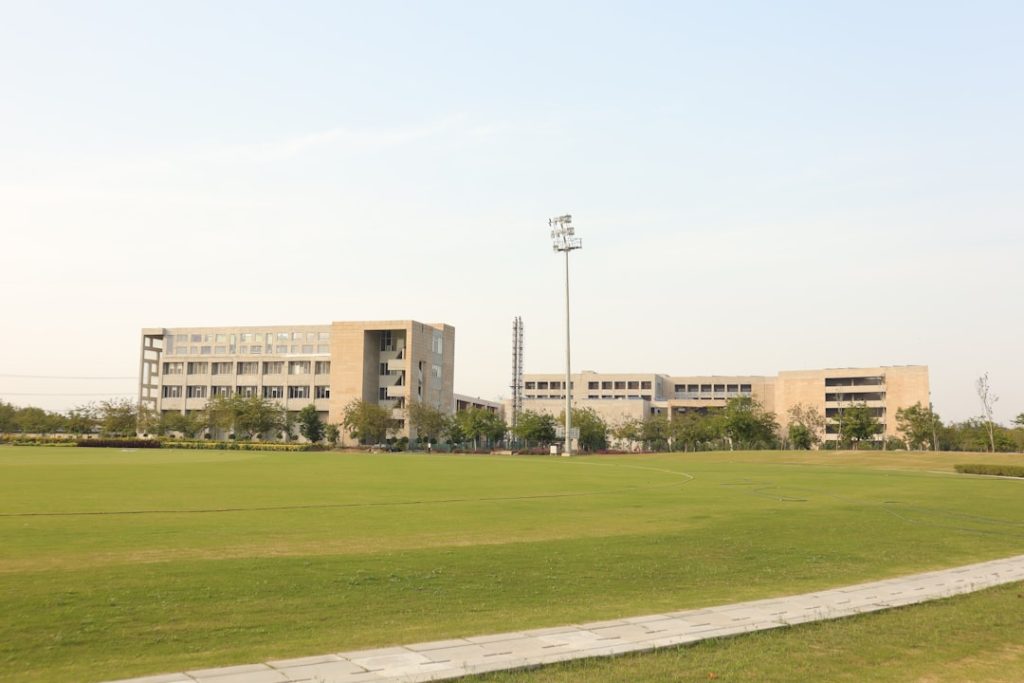Aerospace engineering is a multifaceted discipline that encompasses the design, development, testing, and production of aircraft, spacecraft, and related systems and equipment. This field is not merely confined to the atmosphere of Earth; it extends into the vastness of space, making it one of the most exciting and dynamic areas of engineering. The roots of aerospace engineering can be traced back to the early 20th century, with pioneers like the Wright brothers and later figures such as Robert Goddard and Wernher von Braun laying the groundwork for modern aviation and space exploration.
Today, aerospace engineering integrates principles from various engineering domains, including mechanical, electrical, materials, and computer engineering, to create innovative solutions that push the boundaries of what is possible. The significance of aerospace engineering cannot be overstated. It plays a crucial role in national defense, commercial aviation, and space exploration.
The advancements made in this field have led to the development of technologies that not only enhance air travel but also contribute to satellite communications, weather forecasting, and global positioning systems (GPS). As we stand on the brink of a new era in space exploration, with missions to Mars and beyond on the horizon, the importance of aerospace engineering continues to grow. This discipline is at the forefront of addressing some of humanity’s most pressing challenges, including climate change and sustainable energy solutions, by developing more efficient aircraft and exploring alternative propulsion systems.
Key Takeaways
- Aerospace engineering combines principles of aerodynamics, materials science, and propulsion to design aircraft and spacecraft.
- Top universities are selected based on research output, faculty expertise, industry connections, and innovation.
- Cutting-edge research and innovation drive advancements in aerospace technology and space exploration.
- Strong industry partnerships enhance practical learning and career readiness for aerospace students.
- Aerospace engineering education has a global impact, preparing graduates for diverse careers in the expanding space sector.
Criteria for Selecting the Top Aerospace Engineering University
Choosing the right university for aerospace engineering is a critical decision that can shape a student’s career trajectory. Several factors should be considered when evaluating potential institutions. First and foremost is the accreditation status of the program.
In many countries, including the United States, programs accredited by organizations such as the Accreditation Board for Engineering and Technology (ABET) ensure that students receive a quality education that meets industry standards. Accreditation not only validates the program’s curriculum but also enhances graduates’ employability by signaling to employers that they have received a rigorous education. Another essential criterion is the faculty’s expertise and research output.
Universities with faculty members who are actively engaged in cutting-edge research provide students with opportunities to learn from leaders in the field. Faculty involvement in industry projects or government contracts can also enhance the educational experience by providing real-world context to theoretical concepts. Additionally, prospective students should consider the availability of state-of-the-art facilities and laboratories.
Access to wind tunnels, flight simulators, and advanced computational resources can significantly enrich a student’s learning experience and better prepare them for future challenges in aerospace engineering.
The Role of Research and Innovation in Aerospace Engineering

Research and innovation are at the heart of aerospace engineering, driving advancements that lead to safer, more efficient, and more sustainable technologies. Universities play a pivotal role in this ecosystem by fostering an environment where students and faculty can collaborate on groundbreaking projects. Research initiatives often focus on critical areas such as aerodynamics, propulsion systems, materials science, and avionics.
For instance, ongoing research into lightweight composite materials has revolutionized aircraft design by reducing weight while maintaining structural integrity, leading to improved fuel efficiency. Moreover, innovation in aerospace engineering is not limited to traditional aircraft or spacecraft. The rise of unmanned aerial vehicles (UAVs) and electric propulsion systems exemplifies how research can lead to entirely new categories of aerospace technology.
Universities often partner with industry leaders to explore these emerging fields, providing students with hands-on experience in developing next-generation solutions. For example, projects involving hybrid-electric propulsion systems aim to reduce carbon emissions from aviation, aligning with global sustainability goals. Such initiatives underscore the importance of research in shaping the future of aerospace engineering and ensuring that it meets the evolving needs of society.
The Importance of Industry Partnerships in Aerospace Engineering Education
| Metric | Description | Impact on Aerospace Engineering Education | Example Data |
|---|---|---|---|
| Internship Placement Rate | Percentage of students placed in industry internships | Enhances practical skills and industry exposure | 75% of aerospace students secure internships annually |
| Industry-Sponsored Research Projects | Number of research projects funded or co-developed with industry partners | Promotes innovation and real-world problem solving | 30 projects per year on average |
| Curriculum Alignment | Degree to which curriculum matches current industry needs | Ensures graduates have relevant and up-to-date skills | 85% of courses updated with industry input |
| Guest Lectures and Workshops | Number of industry professionals participating in educational activities | Provides insights into current trends and technologies | 40 sessions conducted annually |
| Job Placement Rate | Percentage of graduates employed in aerospace industry within 6 months | Reflects effectiveness of education and partnerships | 90% employment rate within 6 months |
| Funding and Scholarships | Amount of financial support provided by industry partners | Supports student education and research opportunities | Over 100 scholarships awarded yearly |
Industry partnerships are vital for bridging the gap between academic theory and practical application in aerospace engineering education. Collaborations between universities and aerospace companies facilitate internships, co-op programs, and research opportunities that provide students with invaluable real-world experience. These partnerships often lead to curriculum enhancements that reflect current industry trends and technological advancements.
For instance, when universities work closely with companies like Boeing or Lockheed Martin, they can tailor their programs to include relevant skills such as advanced manufacturing techniques or software used in industry-standard simulations. Furthermore, industry partnerships can enhance funding opportunities for research projects and scholarships for students. Many aerospace companies invest in educational initiatives as part of their corporate social responsibility efforts or to cultivate a skilled workforce that meets their future hiring needs.
This symbiotic relationship benefits both parties: students gain access to resources and mentorship while companies benefit from fresh perspectives and innovative ideas generated by young engineers. Such collaborations are essential for keeping pace with rapid technological changes in aerospace engineering and ensuring that graduates are well-prepared for their careers.
The Impact of Aerospace Engineering on the Future of Space Exploration
Aerospace engineering is poised to play a transformative role in the future of space exploration as humanity seeks to expand its presence beyond Earth. With ambitious missions planned for Mars colonization and lunar bases, engineers are tasked with developing technologies that can withstand extreme environments while ensuring crew safety and mission success. The design of spacecraft capable of long-duration missions requires innovative solutions in life support systems, radiation shielding, and propulsion technologies.
For example, NASA’s Artemis program aims to return humans to the Moon by 2024, necessitating advancements in lunar landers and habitats that can support human life. Moreover, private companies like SpaceX and Blue Origin are revolutionizing space travel by developing reusable rocket technologies that significantly reduce costs associated with launching payloads into orbit. These advancements not only make space exploration more accessible but also open up new possibilities for commercial ventures such as space tourism and asteroid mining.
Aerospace engineers are at the forefront of these developments, working on everything from spacecraft design to mission planning. As we look toward a future where interplanetary travel may become a reality, the contributions of aerospace engineers will be critical in overcoming the technical challenges that lie ahead.
Career Opportunities for Aerospace Engineering Graduates

Graduates with degrees in aerospace engineering have a wide array of career opportunities available to them across various sectors. Traditional paths include roles within major aerospace companies such as Boeing, Airbus, Lockheed Martin, and Northrop Grumman, where engineers work on aircraft design, systems integration, or project management. These positions often involve collaboration with multidisciplinary teams to develop innovative solutions that meet stringent safety and performance standards.
In addition to traditional aerospace roles, graduates may find opportunities in emerging fields such as drone technology or space exploration startups. The increasing demand for UAVs has led to job openings in sectors ranging from agriculture to logistics, where aerial surveillance or delivery services are becoming commonplace. Furthermore, government agencies like NASA or the European Space Agency offer positions focused on research and development for space missions.
Graduates may also choose to pursue advanced degrees or specialized certifications that can further enhance their career prospects in niche areas such as propulsion systems or avionics.
The Global Reach of Aerospace Engineering Education
Aerospace engineering education has a global reach, with universities around the world offering specialized programs that attract students from diverse backgrounds. Countries such as the United States, Germany, France, Canada, and Australia are renowned for their strong aerospace engineering programs that combine rigorous academic training with practical experience. International collaborations between universities often lead to exchange programs that allow students to gain insights into different engineering practices and cultural perspectives.
Moreover, as global challenges such as climate change become increasingly pressing, international cooperation in aerospace research is essential for developing sustainable solutions. Collaborative projects involving multiple countries can lead to innovations that benefit not only individual nations but also humanity as a whole. For instance, initiatives aimed at developing greener aviation technologies often involve partnerships between universities and industries across borders.
This global approach ensures that aerospace engineering education remains relevant and responsive to the needs of an interconnected world.
Advancing the Future through Aerospace Engineering
Aerospace engineering stands at a pivotal moment in history as it grapples with both unprecedented challenges and exciting opportunities for innovation. The discipline’s ability to adapt to changing technological landscapes while addressing global issues underscores its importance in shaping our future. As we continue to explore new frontiers in aviation and space travel, the role of education—particularly through research-driven programs—will be crucial in preparing the next generation of engineers.
The collaboration between academia and industry will further enhance this educational landscape by ensuring that students are equipped with the skills necessary to thrive in a rapidly evolving field. As we look ahead to ambitious missions beyond our planet and strive for sustainable solutions within our atmosphere, aerospace engineering will undoubtedly play a central role in advancing human knowledge and capability. The journey into this exciting realm is just beginning; it promises not only technological advancements but also profound implications for society as we venture into new horizons together.




